- Home
- Firewood Types
- Pine Firewood
Pine Firewood
This post may contain affiliate links so I earn a commission.
Is pine firewood a good choice?
Well, it depends on what you plan on using it for.
Pine is a softwood that is very sappy and full of resin.
A major concern for most people when burning pine is the chance for creosote buildup inside the chimney.
Creosote is a dangerous buildup inside the chimney that can create a devastating chimney fire.
Creosote can form from cool unburnt gases that adhere to the inside of the chimney.
If these unburnt deposits catch fire, the result is a chimney fire.
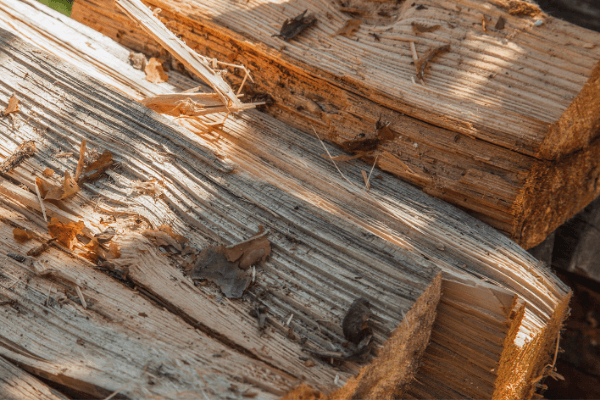
Creosote forms from a cool, damp fire.
It's the way the fire burns that creates creosote, not necessarily the type of wood.
Any wood you use should be seasoned to produce a hot, clean burning fire.
With that being said, most people will not use pine for indoor firewood due to the high resin and fear of creosote build up.
So what exactly is a pine tree?
Here are a few common features.
Common Features
These are about 115 different types of pine trees.
They are evergreen trees that generally like acidic, well drained soils.
Chances are, if you live in North America, you have at least one or two types of pine species growing nearby where you live.
Some of the most common are:
- Southern Yellow Pine
- Eastern White Pine
- Sugar Pine
- Jack Pine
- Pitch Pine
- Norway Pine
- Ponderosa Pine
- Western White Pine
Pine trees grow well in sand and can be used to prevent soil erosion in sandy conditions.
They are relatively hardy trees that have a long lifespan, ranging from 100-1,000 years.
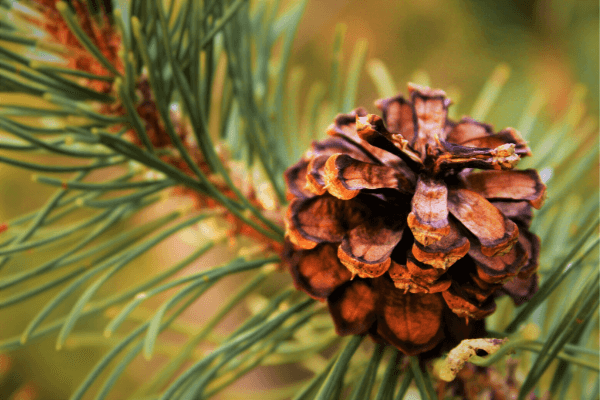
Pine trees have long slender needles that commonly grow in clusters.
They have a very distinctive "pine" smell and keep their needles year round.
The pine tree can produce a nice windbreak during the winter, but the tree can buildup with snow and the soft wood can snap under high winds and the excess weight of the snow.
A very distinctive feature of the pine tree that most children enjoy is the pine cone.
The cones contain the seeds of the tree, and they're commonly used in craft projects and creative play.
Forestry
Pine trees are logged for their desirable lumber.
The lumber can be used for flooring, construction and furniture.
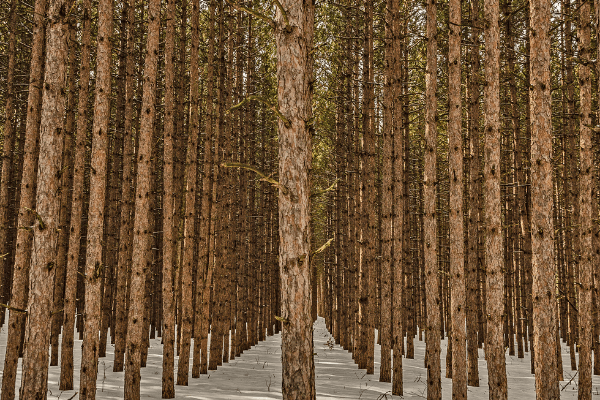
Most pine trees are planted in stands where numerous trees are closely planted in rows.
This encourages the trees to grow tall and straight with only a few branches towards the top of the trees.
Cutting And Splitting Pine Firewood
Pine is no more difficult to cut and split than any other type of firewood.
Although its sap can sometimes make a mess of your axe or saw, it is not difficult to split.
You may want to wear grubby clothing and shoes that you don’t mind getting messy (or even throwing away) when you’re cutting and splitting your pine firewood.
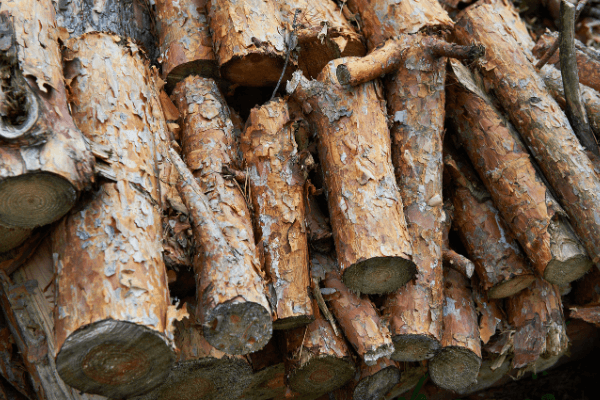
Take note that green
pine generally is more difficult to split by hand so you may want to let it dry a bit first.
Similarly, pine has a lot of knots in most cases, which can make it even more difficult to cut and split.
Make sure you season your pine firewood before burning it, though!
We’ll tell you more about this below.
How Long Should Pine Dry Before Burning?
Like most firewood types, pine firewood should ideally be allowed to season for around six to twelve months.
This isn’t quite as long as many hardwoods, like oak, which take two years or longer to season.
Of course, paying attention to the specific tree is important, as some will have more or less water content than others and therefore take more or less time to dry.
Burning Pine Firewood
Pine is an excellent choice for firewood, particularly if you plan to use it as kindling outdoors.
It is a wonderful fire starter, particularly because it has so much resinous sap.
This sap acts as a good ignitor, helping you to get a fire started quickly and easily.
However, you need to be careful about using it indoors due to the risk of creosote build-up.
After all, those same oils that are so helpful when it comes to starting a fire can be potentially dangerous if you are using the firewood in an enclosed setting.
Pine is not the hottest burning firewood type - but it’s not the worst, either.
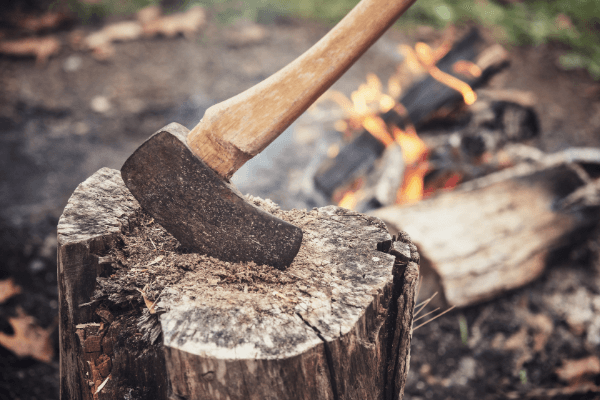
Its levels of
heat output vary depending on the specific kind of pine you are burning.
Compared to other softwoods, pines like Jack pine, Norway pine, pitch pine, and Eastern white pine burn relatively hot, at approximately 14.3 to 17.1 million BTUs per cord.
For best results, consider mixing pine with some other hardwoods in your wood pile.
This will help you control your burn so that you have a firepile that ignites quickly and burns for a long time.
Be advised that, burned by itself with no other types of wood in the fire pit, pine does tend to spark and smoke quite a bit.
Again, this is the result of the oils and sap in the wood.
It can be dangerous when you’re in close proximity to the fire area.
Pine has a distinctive smell that most people describe as being quite pleasant.
It smells festive, making you think of the holidays!
Best Way To Use Pine Firewood
If the wood is split into kindling, a small amount of pine can be used to start a fire.
However, due to the characteristics of the wood, I can not recommend pine firewood for indoor use.
But that doesn't mean you can't use the wood.
I commonly burn seasoned red pine in an outdoor wood furnace.
I mix a little wood in the furnace here and there.
The seasoned wood is relatively light and it also pops and crackles a lot (which is another good reason not to burn it indoors).
If you don't have an outdoor wood furnace and you don't want to use the wood for kindling, pine can be a great firewood for bonfires or just the occasional camp fire.
The wood is easy to light, burns quickly and smells great.

About the Author
Obsessed with firewood, Nick is behind over 350+ of Firewood For Life's articles, as well as countless reviews, guides and YouTube videos to help readers like you reduce heating costs and create the perfect fire.


